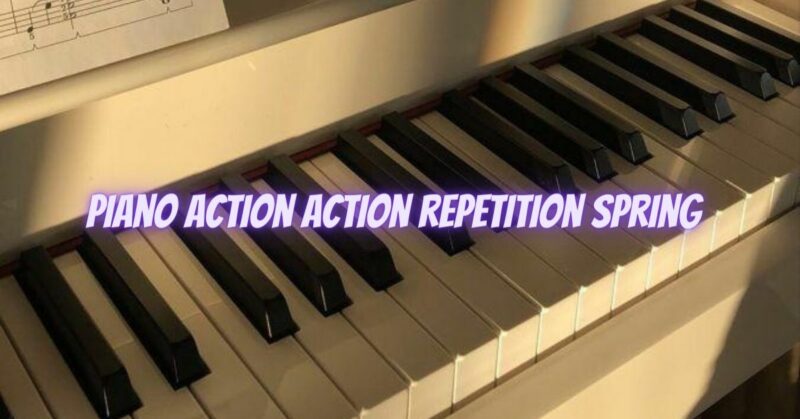The piano action repetition spring is a vital component in the piano action mechanism that plays a significant role in improving the piano’s speed, responsiveness, and repetition capabilities. This spring is responsible for resetting the piano keys quickly after being depressed, allowing for rapid and accurate repetition during fast-paced passages and intricate musical passages. Understanding the function and importance of the repetition spring can provide valuable insights into the mechanics of a piano and how it affects a pianist’s playing experience.
Function of the Repetition Spring:
The repetition spring is located within the piano action and is connected to the repetition lever. When a pianist depresses a key, the repetition lever rotates, engaging the repetition spring. As the key is released, the repetition spring swiftly returns the key to its original position, ready for immediate play, ensuring that the pianist can repeat notes quickly and effortlessly.
Benefits of a Well-Functioning Repetition Spring:
- Speed and Agility: A properly tensioned repetition spring allows for quick key recovery, enabling pianists to execute rapid passages and trills with ease and precision.
- Articulation: The repetition spring enhances the clarity and definition of notes, promoting crisp and well-defined articulation during complex musical passages.
- Control: With an efficient repetition spring, pianists have better control over the notes they produce, making it easier to shape phrases and express emotions in their performances.
- Repeated Notes and Trills: The repetition spring’s quick key recovery is especially valuable for playing repeated notes, trills, and other intricate musical ornaments.
Regulation and Adjustment:
Maintaining the piano action and its components, including the repetition spring, is crucial for optimum performance. Over time, the repetition spring may lose tension or become misaligned, leading to sluggish key response or uneven repetition. Piano technicians can regulate and adjust the repetition spring to ensure it operates with the appropriate tension, providing the desired responsiveness for the pianist.
Regular Maintenance:
Regular piano maintenance by a qualified piano technician is essential for ensuring the proper function of the repetition spring and all other action components. Technicians will inspect, clean, lubricate, and regulate the repetition spring as part of their routine maintenance procedures to keep the piano action in optimal condition.
Conclusion:
The piano action repetition spring is a fundamental element that significantly impacts the performance and playability of a piano. Its function in quickly resetting the keys after each depression enables pianists to achieve speed, precision, and expressiveness in their playing. A well-maintained repetition spring ensures that the piano action remains responsive and reliable, allowing pianists to confidently tackle complex musical passages and produce nuanced, beautiful performances. Regular maintenance and adjustments by a skilled piano technician are essential to keep the repetition spring and the entire action mechanism in peak condition, enabling pianists to fully realize their artistic vision on this majestic instrument.


